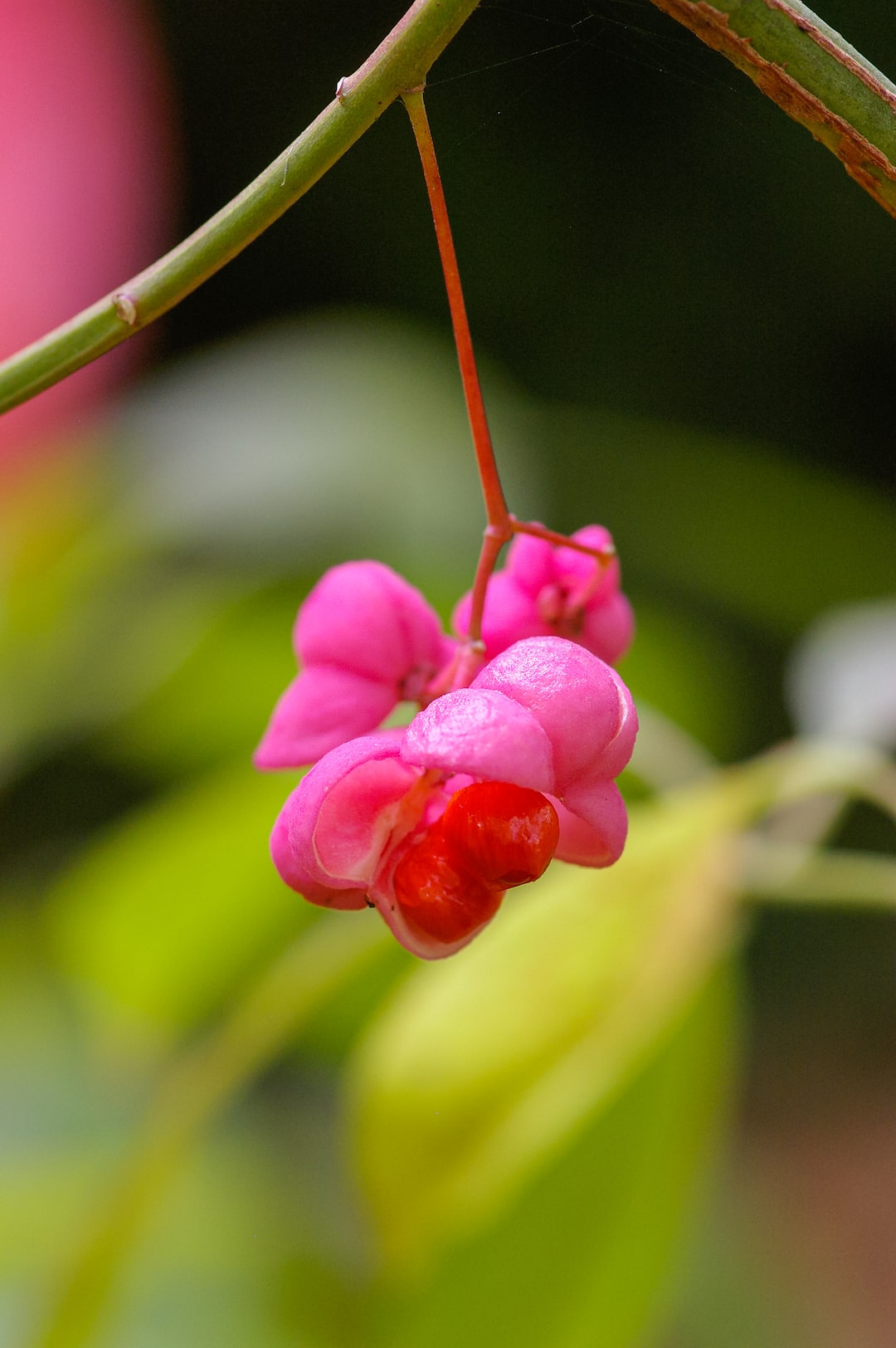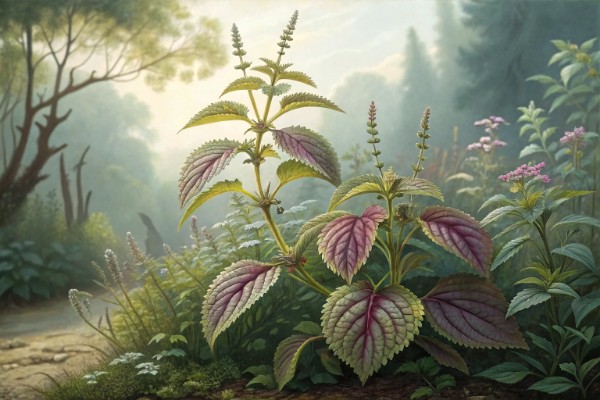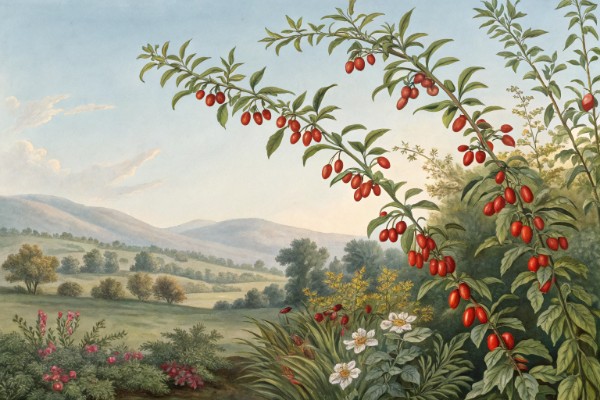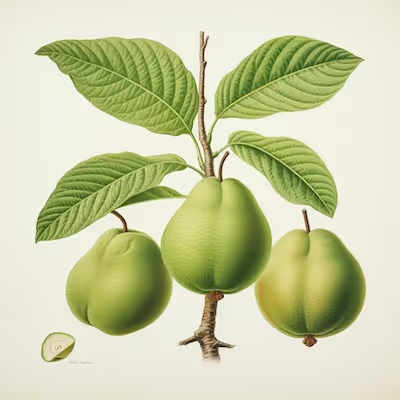Growing Hearts-A-Bustin': Cultivate Nature's Elegant Beauty

Growing Hearts-A-Bustin'
Growing Hearts-A-Bustin' lands you squarely in native plant territory, adding immediate allure and wildlife value to shaded garden beds. With partial shade, moist, well-draining soil, and patience for slow, deliberate growth, Euonymus americanus rewards gardeners with whimsical, pinkish-red seed capsules each autumn. Follow along to discover simple and effective strategies for nurturing healthy plants, expanding habitat for local wildlife, and genuinely enjoying the subtle charm of Hearts-A-Bustin' season after season.
Growing Hearts-A-Bustin' taps into a quiet woodland magic that still stops me in my tracks each fall. The pink capsules split and spill orange-red arils like fireworks, then birds clean the branches by morning.
I grow Euonymus americanus in dappled shade where leaf litter stays cool and sweet. It thrives there, patient and understated until it explodes with color.
Meet the plant
Euonymus americanus goes by strawberry bush, bursting heart, or hearts-a-bustin'. It forms a twiggy, airy shrub about 4 to 8 feet tall and wide, with opposite leaves and tiny green flowers in late spring.
The show arrives in early fall when 4 to 5-lobed capsules open to reveal arillate seeds. The arils are the neon bait for birds.
Site and soil that make it sing
- Light: bright shade to morning sun, with protection from hot afternoon rays in zones 7 to 9.
- Soil: humus-rich, well drained, slightly acidic. I aim for pH 5.2 to 6.2.
- Texture: loam or sandy loam with abundant organic matter. Heavy clay needs 30 percent pine fines plus leaf mold.
- Moisture: evenly moist, never soggy. Think woodland duff after a steady rain.
- Spacing: 3 to 5 feet apart for a light hedge or understory colony.
- Climate: most reliable in USDA zones 6 to 9, with reports of success in protected zone 5 sites.
I learned the hard way that alkaline, thin soils bleach the leaves and stunt growth. If your limestone is close to the surface, use a raised bed with acidic composted bark.
Planting calendar and technique
Fall planting sets the pace, as roots grow until soil dips below 40 F 4 C. Early spring works as well if you keep irrigation steady through first summer.
Dig a wide hole, set the shrub a hair high, then backfill with native soil plus 20 percent composted leaf mold. Water to settle and mulch with 2 inches 5 cm of shredded leaves.
Water, mulch, and feeding
First year, give 1 inch 25 mm of water weekly if skies withhold rain. After establishment, mine handle dry spells but color best with consistent moisture.
I skip fertilizer except for a spring topdress of compost. Too much nitrogen pushes lank growth and few fruits.
Pruning that respects the fruit show
Prune right after fruit drop so you do not cut off next season’s display. I thin a few old stems at the base to keep the plant airy.
Tip back winter storm breaks to a healthy bud. Avoid shearing, which ruins the natural architecture.
Propagation that actually takes
Seed is viable, but dormancy runs deep. Clean off the arils, then cold stratify 90 to 120 days at 39 to 41 F 4 to 5 C before spring sowing.
For clonal plants, I take 4 to 6 inch 10 to 15 cm softwood cuttings in early summer, quick-dip in 2,000 ppm IBA, and root under high humidity. My success rate runs 70 to 85 percent with bottom heat set at 72 F 22 C.
Wildlife value and deer reality
Birds love the arils and move seed around the garden. Small mammals browse fallen fruit and help with cleanup.
Lady Bird Johnson Wildflower Center notes: "Birds and mammals eat the fruit."
White-tailed deer treat the stems like salad. In 2018 I lost a full row until I caged each plant with 5-foot 1.5 m wire.
- Use rigid cages the first 3 seasons, or a repellent rotation every 2 weeks during flush growth.
- Plant inside a matrix of deer-resilient neighbors like Itea virginica, Morella cerifera, and Christmas fern for a little deterrence.
Pests and disease, kept in check
Scale insects can colonize Euonymus, especially in heat islands. Inspect undersides of stems in late spring and treat early with horticultural oil at label rate.
I see minor powdery mildew in stagnant air. Improve airflow, water at the base, and avoid late-day irrigation.
Design notes from the shade border
Hearts-a-bustin' shines against blue-green textures. I flank it with Christmas fern, oakleaf hydrangea, and spicebush for a layered woodland edge.
For a longer fall arc, pair with beautyberry, winterberry holly, and late-season asters. Those combos draw birds like a diner at dawn.
Native range and ecology
This species is native across the southeastern and mid-Atlantic United States in rich woods and stream terraces. It prefers understory niches where leaf litter builds slowly.
USDA, NC State Extension, and the Wildflower Center all describe it as a light shade shrub of moist, acidic soils that fruits in early fall. My plants match that profile perfectly.
Buyer’s guide for Growing Hearts-A-Bustin'
- Source: choose native plant nurseries that list local ecotypes or regional provenance. Ask about deer browsing in their production beds.
- Sizes and prices: liners and 1-quart pots for 12 to 18 USD 11 to 17 EUR, 1-gallon for 20 to 28 USD 18 to 26 EUR, and 3-gallon for 35 to 55 USD 32 to 51 EUR.
- Look for multi-stemmed young plants with firm green bark and no scale. Avoid pot-bound roots circling the container.
- Seeds show up rarely and need stratification. Buy clean seed, store cool, and sow in fall if possible.
- Shipping: autumn shipment reduces transplant stress in zones 6 to 8. Spring shipment suits colder sites.
I prefer 1-gallon stock for fastest establishment with minimal transplant shock. Plant two or three for cross exposure to pollinators and a fuller fruit set.
Comparisons and smart alternatives
- Euonymus atropurpureus Eastern wahoo: taller 10 to 20 feet 3 to 6 m, tolerates more sun and prairie edges. Fruit show is good though capsules are less vivid.
- Euonymus europaeus European spindle: flashy, but it self-seeds and can naturalize beyond bounds in parts of North America. I avoid it near natural areas.
- Euonymus fortunei wintercreeper: widely sold groundcover that invades woodlands in many states. Choose natives instead.
- Callicarpa americana beautyberry: electric purple berries, easy, deer tolerant, pairs well with hearts-a-bustin'.
- Ilex verticillata winterberry: for wetter ground and brilliant red drupes, plant male and female for fruit.
Season-by-season playbook
- Late winter: assess deer damage, reset cages, and prune out winter dieback.
- Spring: refresh mulch and water through dry snaps while shoots extend.
- Summer: monitor for scale and keep soil evenly moist in heat above 90 F 32 C.
- Fall: enjoy the show, collect a few fruits for seed, and plant new stock while soil is warm.
Safety and pets
Like many Euonymus, the seeds and foliage can be toxic if eaten in quantity. Keep curious pets and toddlers from sampling the plant or fallen fruit.
Frequently asked questions about Growing Hearts-A-Bustin'
How long to fruiting from a nursery plant. Two to three seasons in good light with steady moisture.
Can it handle full sun. In zones 6 to 7 with deep soil and mulch yes, but color fades in hot, dry exposures.
Will a single plant fruit. Yes, though I see heavier crops when multiple shrubs bloom nearby.
Can I grow it in a container. Yes in a 10 to 15 gallon 38 to 57 L pot with bark-based mix, but protect roots from freeze-thaw below 15 F minus 9 C.
How cold can it take. Established plants shrug off 0 F minus 18 C, with reports into zone 5 in sheltered sites.
What signals stress. Pale leaves, short internodes, and sparse fruit hint at high pH or drought.
Field notes from my beds
The best fruit set I ever logged followed a mild, evenly wet summer with night temps in the 60s F 15 to 20 C. The capsules snapped open right after the first run of 45 F 7 C nights.
In compacted, post-construction soil I double-dug, added coarse bark, and sowed a thick leaf mulch in fall. By year three the fungal life woke up and the shrubs found their stride.
Citations and further reading
- Lady Bird Johnson Wildflower Center, Native Plant Database, Euonymus americanus. Clear notes on habitat, wildlife use, and culture.
- NC State Extension, Plant Toolbox, Euonymus americanus. Practical guidance on soil, light, and deer browse pressure.
- USDA PLANTS Database, Euonymus americanus. Distribution and taxonomy.
- Clemson Cooperative Extension, Euonymus species fact sheets. Pests such as scale and cultural prevention steps.
- U.S. Forest Service native shrub references for understory management and deer impacts in eastern forests.
These sources match what I see in the ground. They also keep me honest about range maps and best practices.
Cheatsheet: Hearts-A-Bustin' Mastery for Home Growers
🌱 Site Selection
- Sun: Partial shade best, tolerates dappled sun.
- Soil: Slightly acidic (pH 5.0–6.2), well-drained, rich in organic matter.
- Room: Plant 3–6 ft (1–2 m) apart. Mature height: 3–6 ft (1–1.8 m).
🌸 Planting & Propagation
- Sow stratified seeds in fall, 1/2 in (1.2 cm) deep, or plant potted shrubs in spring/fall.
- Amend soil with aged compost. Mulch 2 in (5 cm) to retain moisture.
💧 Water & Feeding
- Keep soil evenly moist, not soggy—especially first year.
- Rarely needs extra fertilizer if soil is rich. Top-dress yearly with compost.
🧬 Care & Pruning
- Prune lightly after fruit drops to shape.
- Remove dead or crossing wood early spring.
- Fast fact: Lifespan: Over 20 years with minimal effort.
🍃 Wildlife & Self-Sufficiency
- Provides fall food for birds, deer, and pollinators.
- Bright red seeds not edible for humans.
🦠 Pest & Disease
- Rarely troubled by pests. Watch for powdery mildew; space for airflow.
✨ Stats & Beauty
- Over 2M North American acres grow wild colonies.
- Distinctive magenta fruits burst to reveal red seeds in Sept–Oct.
🧰 Tools and Products You'll Need
- Bareroot or container-grown Euonymus americanus or viable seed
- Hand trowel for planting
- Mulch (pine needles, shredded bark)
- Watering can or hose with gentle spray
- Bypass pruners
- Gloves
- Compost
FAQ on Growing Hearts-A-Bustin'
What's the ideal soil condition for Hearts-A-Bustin'?
Hearts-A-Bustin' thrills in well-draining, organically rich soils. The plant prefers a loamy, slightly acidic medium that invites its roots to stretch and breathe. If your backyard soil disappoints, amend generously with compost or leaf mold to coax the shrub into powerful, vibrant growth.
Does Hearts-A-Bustin' require frequent watering?
Freshly planted shrubs demand regular watering until roots find purchase. Once established, Hearts-A-Bustin' handles moderate dryness gracefully. Water deeply and thoroughly, then pause until the soil whispers dryness at your fingertips. Avoid soggy ground to prevent fungal betrayals.
How much sun is optimal for cultivating a thriving Hearts-A-Bustin'?
The charms of Hearts-A-Bustin' shine brightest beneath dappled sunlight or partial shade—morning sun is preferred, leaving afternoons to the comfort of gentle shade. Direct, relentless sunlight may scorch its foliage, while deep shade deprives it of its vibrant charisma.
Should Hearts-A-Bustin' be fertilized regularly?
Less is more with fertilization. Offer an organic, balanced fertilizer once each spring to nurture steady growth. Excessive feeding disrupts the shrub's natural rhythm, diminishing flowering potential and weakening stems.
Are there pests or diseases to watch out for when growing Hearts-A-Bustin'?
Hearts-A-Bustin' generally avoids trouble, but vigilance against scale insects and powdery mildew will serve you nicely. Maintain proper spacing and airflow, and periodically inspect foliage. Respond early to issues with organic neem oil or insecticidal soap, keeping your shrub vibrant and spirited.
When and how should Hearts-A-Bustin' shrubs be pruned?
Pruning sings sweetest in late winter or early spring, just before the shrub awakens with new growth. Remove any dead or crossing branches, shaping gently to enhance natural form. This annual ritual encourages fresh vigor and healthy blooming.
Can Hearts-A-Bustin' thrive in containers?
Container living suits Hearts-A-Bustin' if the pot is roomy and drainage uncompromising. Select a vessel with ample space, filled with organic-rich, well-draining soil. Remember, container-grown shrubs dry faster, so watering habits must adapt accordingly.
Growing Hearts-A-Bustin' is about inviting a rare, wild elegance into your space. This shrub’s quirky capsules and bold color make it a standout, especially when autumn hits and you crave a little drama out your window. These natives don’t ask for much—just a stretch of decent light, a patch of well-drained soil, and a tolerance for nature’s pace. You’ll spot pollinators swooping in and even birds enjoying the feast. Skip the tame; let things get a bit wilder with this stunner.
If you’re feeling adventurous after mastering Growing Hearts-A-Bustin', you might also try your hand growing unusual natives like duck potato or greenbrier. This isn’t about perfection—it’s about watching something real thrive in your care. Give it patience, and Euonymus americanus will reward you with a spectacle every year.



